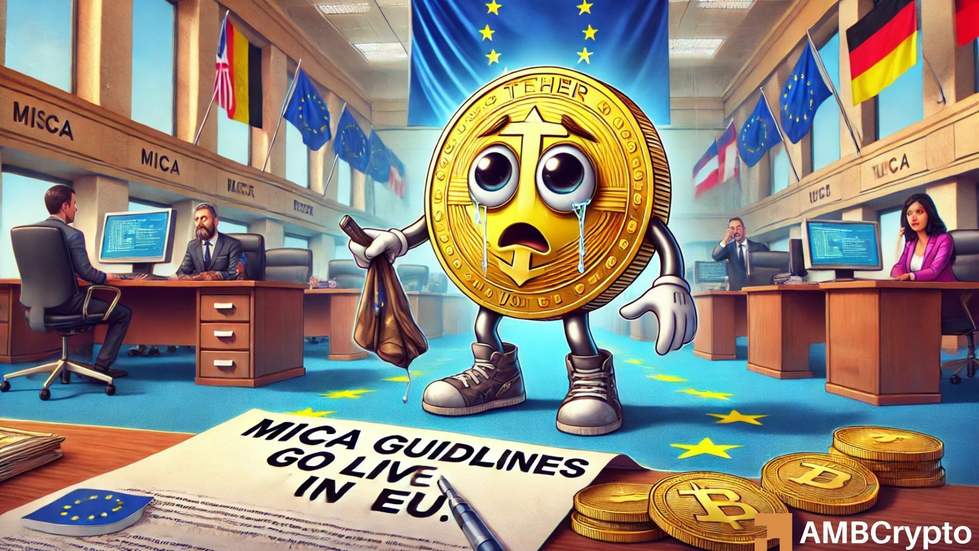In the middle of December, the cryptocurrency exchange Coinbase decided to delist Tether’s USDT due to its failure to comply with the EU’s crypto regulation MiCA (Markets in Crypto Assets Regulation), a stringent standard that came into effect on December 30th.
As one of the top USD-pegged stablecoins in terms of market capitalization, Tether’s USDT had a dominant position until recently when the market started adjusting to align with MiCA’s regulations.
Based on a newly released report from Kaiko, the largest MiCA-compliant stablecoin, Circle’s USDC, might experience an increase in its market share following the removal of USDT.
Rumors Surrounding USDT’s Compliance
Despite the actions by Coinbase, there has been no official statement from the regulator ESMA (EU Securities and Markets Authority) regarding the compliance status of USDT at this time.
Reports suggest that Binance and other exchanges have restricted certain USDT services for users within the EU. Part of the recent communication from the exchange stated,
“Binance established its stance on non-MiCA stablecoins in June 2024, and there are no immediate changes. USDT custody support remains unchanged, and deposits and withdrawals are operating normally. Users are encouraged to utilize USDC and EURI as these conform to MiCA regulations.”
Could the lack of communication from ESMA indicate potential non-compliance for USDT?
According to Juan Ignacio Ibanez, a technical member of MiCA Crypto Alliance, an advocacy group for EU crypto compliance, the absence of statements from regulators does not imply USDT’s compliance. Ibanez highlighted in an interview with Cointelegraph that,
“No regulatory body has explicitly stated that USDT complies, but the absence of such statements doesn’t confirm compliance either.”
Contrary to the actions taken by Coinbase, other exchanges have not delisted USDT.
Samson Mow, the CEO of Jan3, a BTC advisory firm, labeled the delisting as unwarranted FUD concerning Tether. He mentioned,
“Apart from Coinbase, who has ties to Circle, no other exchange plans to remove USDT in the immediate future for European users. European regulators have over a year-long grace period.”
The recent restructuring in the EU has led to a decrease in USDT’s market capitalization from $141B to $137B. Observers have cautioned that the removal of USDT could impact liquidity in EU markets and potentially strengthen the dominance of U.S.-based stablecoins.

